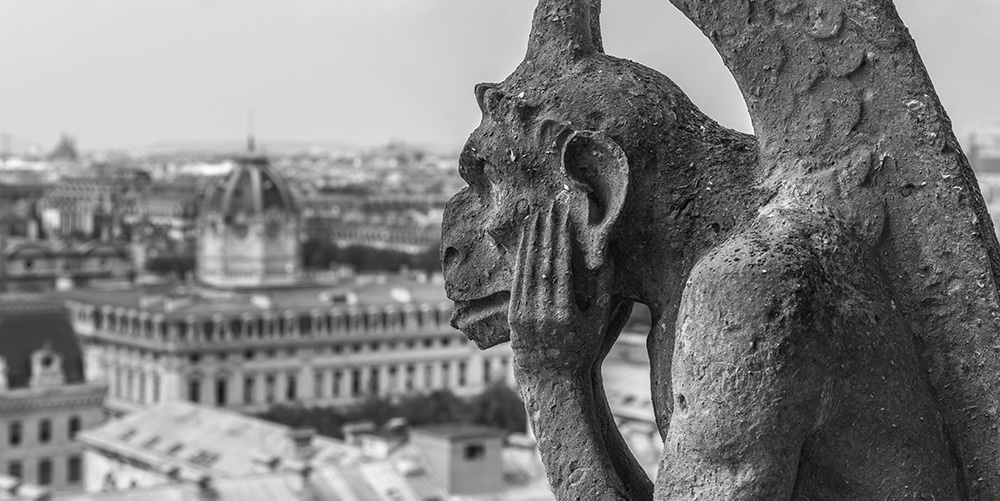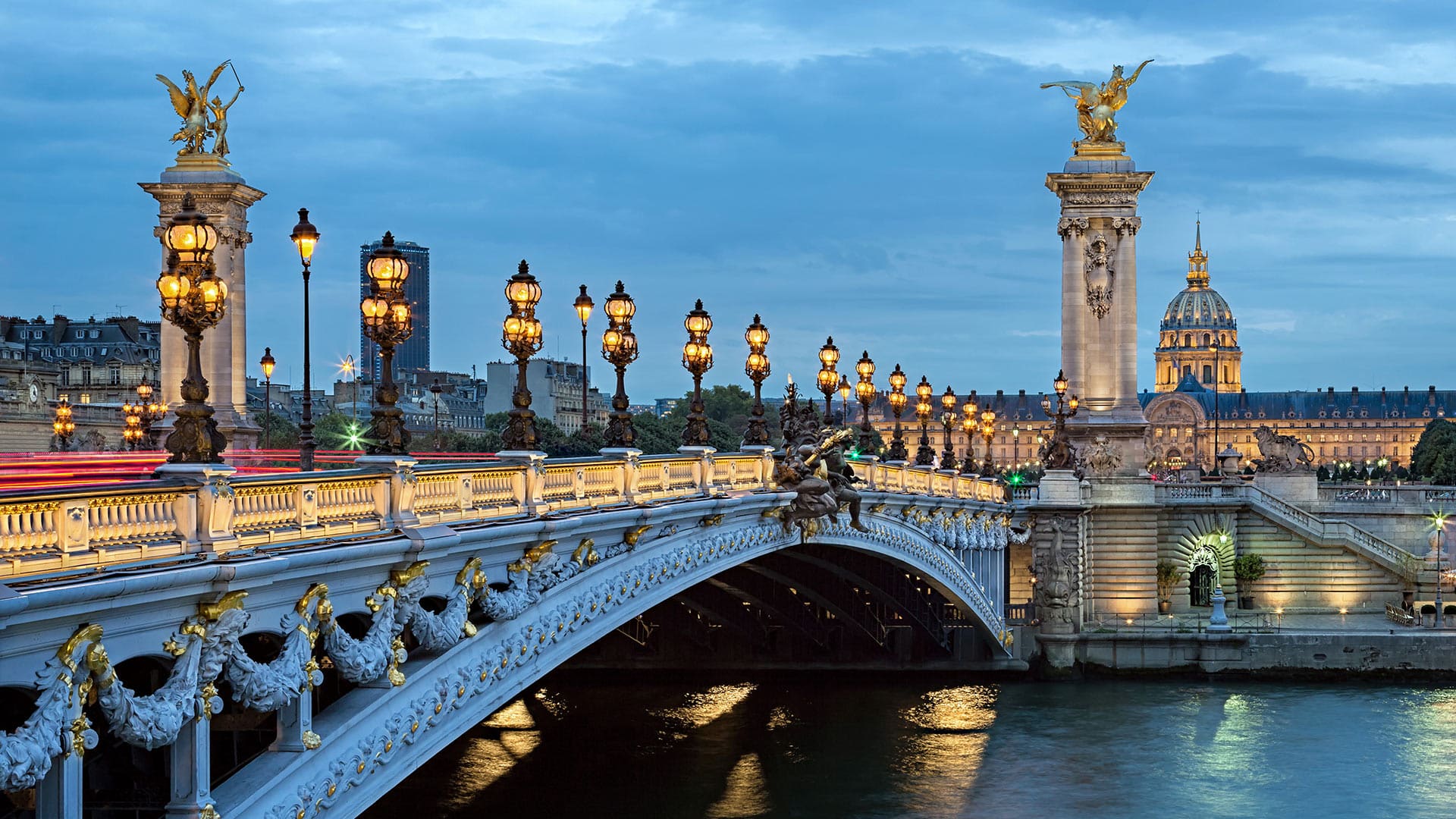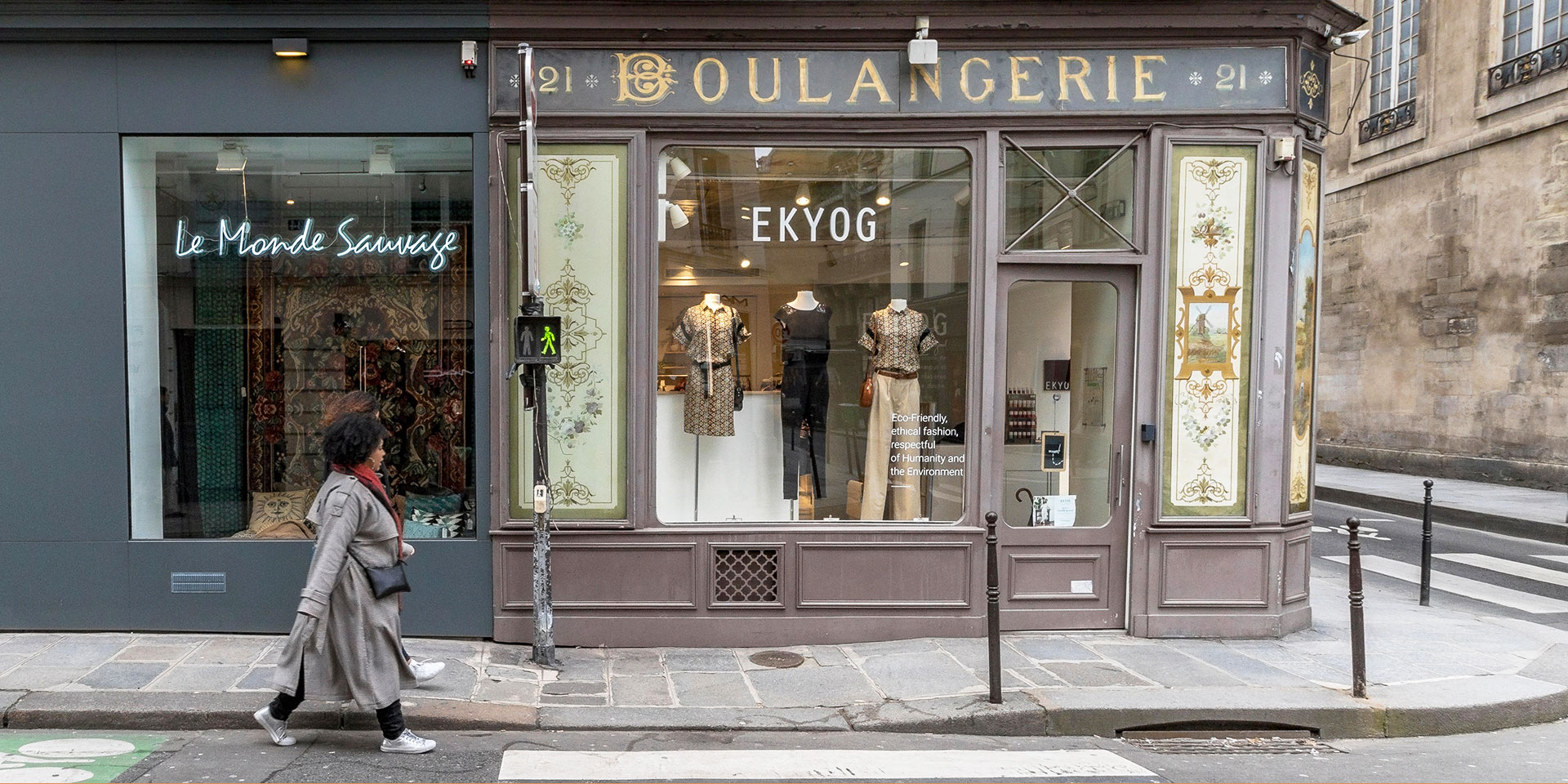
There are dark things to do in the City of Light, like ponder Notre Dame gargoyles or descend into the Catacombs. (Photo: Fadi Al-barghouthy / Alamy)
Paris: The city of love and light, right? Not always. If you embrace mystery and a little macabre, there’s a dark side of Paris that lives alongside its romantic persona. There have been less-than-sunny chapters in the city’s centuries-old history. The Dark Ages and the bloody French Revolution have left an indelible mark on the city. Trace their legacy for one of the most intriguing and, decidedly, unromantic things to do in Paris.
Get With Gothic Gargoyles
Medieval Parisian architects had a job to do, but they also incorporated a twisted sense of style into their work. In order to drain water from roofs and away from the building’s sidewalls, they created the gargoyle. A drainpipe in disguise, the gargoyle became a decorative flourish for Gothic buildings. Fantastic and terrifying beasts were affixed to the tops and sides of buildings, styled after the gargouille, a fire-breathing dragon-like legendary creature. There’s a tour of Notre-Dame Cathedral that gives graphic details on possibly the world’s most famous gargoyles, you just have to look up to spy more of these “nightmares in the sky” as you walk the streets of Paris.
Leave the Land of the Living
The sign above the entrance of the Catacombs warns those approaching, “Stop: This is the land of the dead.” Descend a spiral stairway and pass through a narrow hallway to enter the tunnels where millions of skulls and bones excavated from overcrowded cemeteries were relocated in the 18th century. The dead don’t walk here — the skeletons of around 6 million former Parisians are stacked up on top of each other in the eerie passages of old mines that stretch for miles under the city. You can reach the Catacombs by the Denfert-Rochereau Metro stop, but the exit is close to the Mouton-Duvernet station.
To the Guillotine
While the Catacombs evoke a sense of the macabre, the infamous medieval prison of La Conciergerie stands testament to the cost many Parisians paid for their country’s democracy. Here, political prisoners of the French Revolution were brought to await their fate, often a death sentence at the guillotine. In August of 1793, the widow and deposed queen Marie Antoinette was moved here from her cell in the Tower of the Temple to spend the last nine weeks of her life as Prisoner 208. Her trial, which was largely set up to humiliate her, ended in a guilty verdict delivered after just one hour of deliberation. She was executed on October 16 at the Place de la Concorde. Today, you can see her former cell that, although better than other cells in the prison, is austere by the standards of the former queen. Other prisoners here lived in filthy conditions behind impenetrable walls and barred doors and windows.







